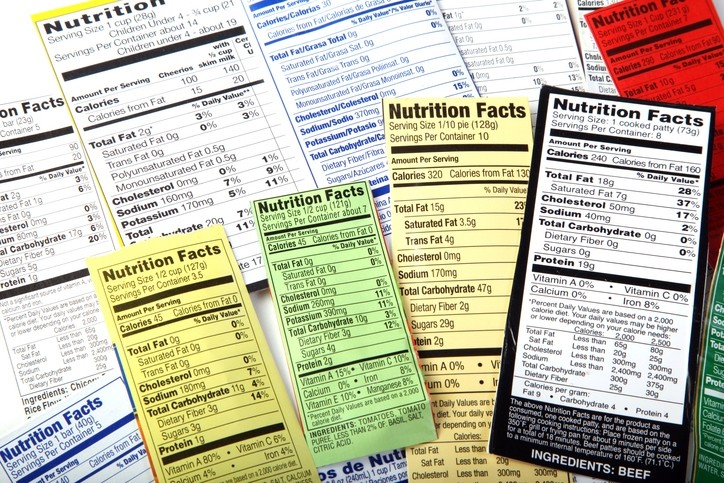Mandatory health star ratings? ANZ ministers concerned with slow uptake, nutrition info panel update also planned

This is part of the food authority’s work to improve front- and back-of-pack nutrition information labelling, which is aimed at helping consumers make informed and healthy choices.
“FSANZ’s Consumer Insights Tracker identified Australian and New Zealand consumers are looking to make healthy food choices, and they rely on food labels to help them do that.
“The work on HSR and the NIP provides a unique opportunity to consider how nutrition labelling on the front and back of packaged food can be enhanced to better provide consumers with the information they need to make healthy choices,” said FSANZ CEO Dr Sandra Cuthbert.
Outcomes of The Food Ministers’ Meeting
These developments come after ministers expressed their disappointment in the uptake of the HSR system.
Previously, FSANZ considered mandating the front-of-pack HSR system should industry not meet voluntary uptake targets – 60% of intended products have applied the HSR system by 14 November 2024, and 70% by 14 November 2025.
As at the beginning of 2023, only 30% of New Zealand products and 32% of Australian products were using the HSR label.
This means the results are significantly off-track to reach the final target of 70% by the end of 2025.
Therefore, the ministers agreed to commence preparatory work on mandating the HSR system if targets are not met by the set timelines. The work will inform future decisions by food ministers on the HSR and support efficient implementation if the system is mandated.
FSANZ and the Food Regulation Standing Committee (FRSC) will consider issues such as the impact on cost of living and inconsistencies in some product categories. It will not involve a full review of the HSR system or algorithm.
At the same time, there will be a holistic review of the NIP found on the back of packaged foods – the first in over 20 years.
NIP on food labels provide information on the average quantity of energy and these nutrients: protein, protein, fat, saturated fat, carbohydrate, sugars, and sodium.
Coordination of the work on both the front (HSR) and back (NIP) of packaged foods presents an opportunity to improve all aspects of nutrition labelling, including information about added sugars.
FSANZ to rework food nutrition labelling
FSANZ is considering amending the Food Standards Code to include added sugars information in the NIP.
This is to align with the Australian and New Zealand dietary guidelines on limiting intake of foods and drinks containing added sugars. The guidelines also advised limiting consumption of fruit juice and dried fruit as they are high in sugar.
However, ANZ ministers want a clearer definition of “added sugars” ahead of labelling policy changes.
Therefore, to consider potential formats for including added sugars in the NIP, FSANZ conducted consumer testing in Australia and New Zealand.
The test was done via a focus group. It investigated areas like consumer use, and overall understanding of ‘sugars’ and ‘added sugars’ information.
A key finding showed that consistency in how the NIP information is displayed is crucial.
“This research identified that a vital function of the NIP is to help consumers make comparisons and choose between products easily. This function is best served by consistency of sugars labelling in the NIP across similar products, as inconsistency is a barrier to comparison,” said researchers in the report for the Added Sugars Focus Group, which was compiled in May 2024.
Some felt that including the label “high” against “sugars” in the NIP is confusing – it was not clear what the word “high” referred to. The test subjects questioned whether the sugar content was high compared to other brands in the same product category, or high as a proportion of their daily intake.
Additionally, if signifying whether sugar content was “high”, other nutrients in the NIP would need to have a similar indication to avoid misleading consumers.
For example, labelling only the sugars – and not other nutrients in the product – as ‘high’ implied to some that the levels of other nutrients in the product, such as sodium or fat, were low.
Consistency was also crucial between NIP information and the ingredients list, where confusion resulted when these two pieces of information were seen to be mismatched.
That is, when the ‘added sugars’ line in the NIP showed an amount higher than 0g, yet there were no ingredients that consumers perceived as being added sugar in the ingredients list – for example, fruit products were listed, which some consumers might not consider to be added sugars.
Sugar is also a focal point for alcoholic beverage labelling – FSANZ is working on updating standards that will affect carbohydrate, sugar, and energy claims on pack.










